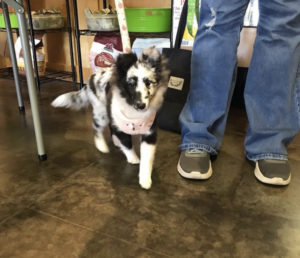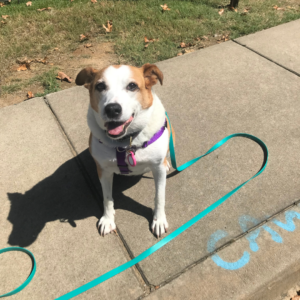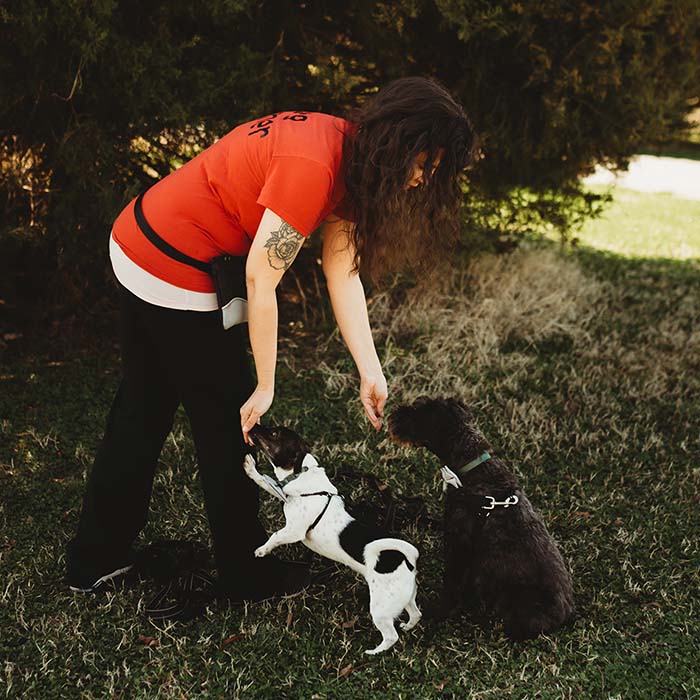Embarrassed: The Only Reactive Pitbull in Atlanta
Thousands of dollars, seven trainers, and one relationship rebuilt on trust
Classes start again on September 12! Click here for more information. Also, in case you missed it, my 12 Steps to Successful Rescue article is here, and my Turpentine Creek Wildlife Refuge article is here. This is the second installment of Embarrassed, a three-part podcast series that will also be available as an e-book after next week. The first part can be found here. Also be sure to subscribe wherever you consume your podcasts!
Lauren had always loved pitbulls.
Three and a half years ago, while visiting her sister, who used to volunteer for a pitbull rescue, Lauren met Theo.
Theo, an adorable cuddly pitbull puppy, was spoken for already. She decided she needed a pitbull puppy of her own, and when she switched jobs to one closer to her apartment, Lauren knew it was the perfect time.
She brought Drake home at seven weeks old and heavily socialized and trained him. By the time he was six or seven months old, he’d started growling at certain men. From there, he started growling at all men, then women, children, and certain dogs.
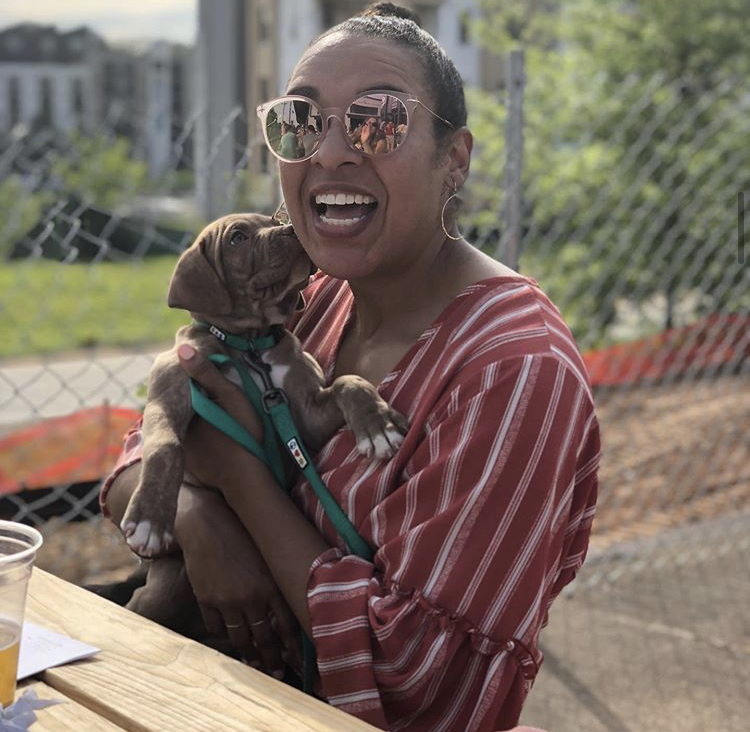
When she lost her job in early July, she decided to start her Instagram account, Empath and Drake, to document her journey with Drake. “For me, the hardest part of it was that I didn’t have a dog I could take anywhere or have a dog that liked all people,” Lauren shared. “It was almost hurtful. This extension of me isn’t accepting of all people like I am. There was a long time when I bottled it up and it caused anxiety because I was bottling it up. I realized part of controlling his reactivity was controlling my own reactivity and my own anxiousness. I figured out when I write things out and I connect with people, it helps me process things.”
She searched under the hashtag “reactivedog” to find others going through similar things. “There are so many great accounts and owners sharing tips,” Lauren said. “I hope that no one feels alone because it can be very lonely. Everyone is struggling somehow and we’re all just trying to get by, so why not share our experiences and get comfort from one another?”
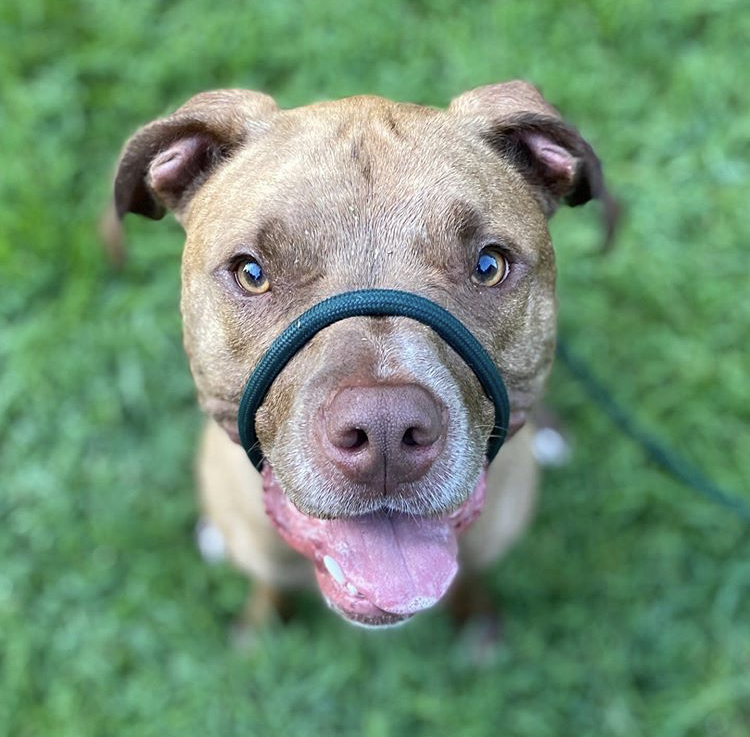
- Find Empath and Drake here.
- Find John is for the Dogs here.
- Find Odin here (his owner, Dawn, will be on the podcast next week!)
Now, Drake is two years old and 70 pounds. “I would describe him as the perfect house dog, but when his environment is unpredictable, he gets riled up,” Lauren said. “From a distance, he looks like a well-behaved dog.”
As an empath, Lauren also found struggles in sorting through her perception of how others react to Drake. “I think that’s another part of how his reactivity affects me,” Lauren said. “I feel the stares and I feel the looks, and I take on that fear that other people have felt and it makes me feel even worse about it. I’m definitely a feelings absorber. I’m definitely an empath.”
In the podcast, we mentioned the Dunning–Kruger effect: A cognitive bias in which people with low ability at a task overestimate their ability or knowledge.
Lauren realized that some of Drake’s reactivity may have been due to the developmental period he was going through, while some of it may have been due to the relationship she was in at the time. As he reacted more, she grew more tense when she walked him, which caused more reactions.
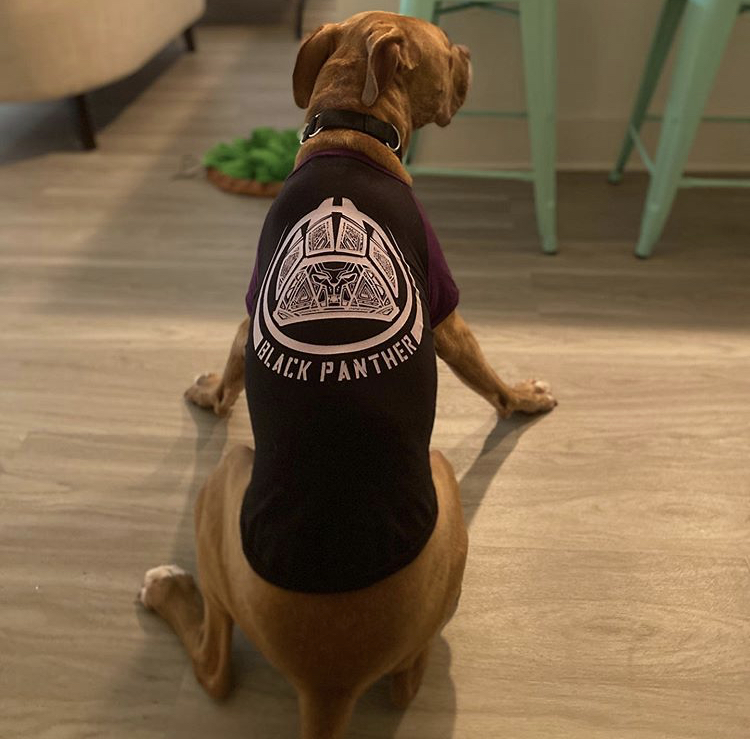
She’d hired a dog trainer when he was 10 weeks old, wanting to work on how bitey he was as a puppy. She paid $1,100 to engage the trainer for life and was able to work through structure and foundational cues like sit and stay. But corrections were another story. “When it came to correcting, she was entirely too harsh,” Lauren explained.
The trainer put him on a prong collar at 10 weeks, then on an e-collar. “Looking back, it wasn’t solving his emotional reaction,” Lauren said. “It wasn’t solving the issue. It was just correcting him and making him feel pain.”
After an incident where the trainer used the e-collar to shock Drake for lunging, he kept waking up during the night and flinching. Then he had an accident in the middle of the night. “I kept on working with her, but something didn’t feel right,” Lauren said.
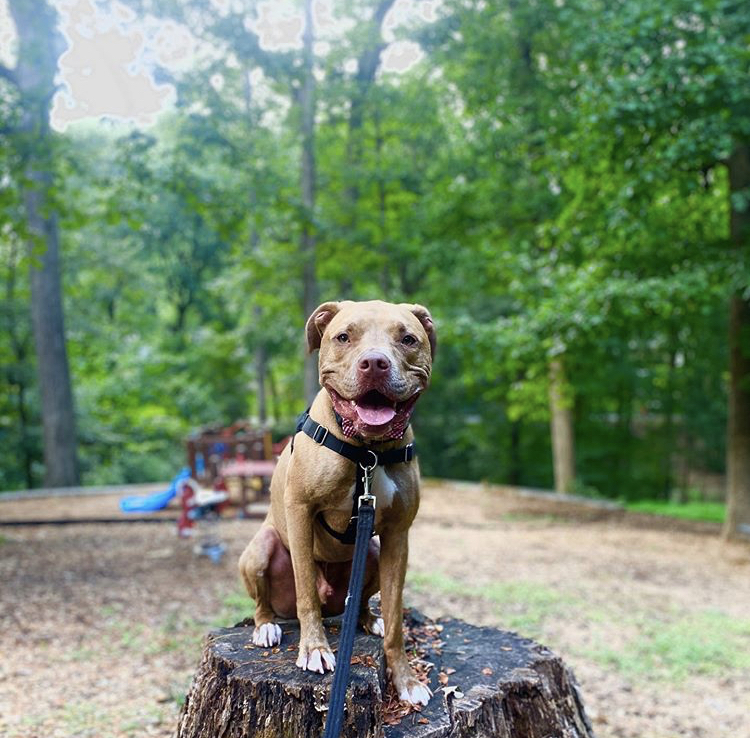
From there, she kept trying to find help for Drake. There was the trainer who took him for a week and trained him on everything but the reactivity work he needed. There were other trainers who came to the house for consultations, another trainer who would choke out Drake whenever he reacted, and a final trainer in a board and train who hanged Drake by his leash and kicked him in the chest. “Drake excreted his anal glands because he was so scared,” Lauren said. “I started crying. He said, ‘You see that crying? That needs to stop.’”
For two weeks after the board and train, Drake was perfect, Lauren shared. But by the third week, his reactivity had turned into explosive responses.
Lauren would later learn about trigger stacking. At the time, she called the trainer, who told her she wasn’t being hard enough on Drake.
She decided to learn on her own. “From there, it’s been reading up on people,” she explained. “Just learning how I can form a relationship with him. … [I didn’t want to] be unfairly harsh with him. The issue is not that he’s aggressive. The issue is that he’s trying to protect himself because he thinks fear is coming his way.”
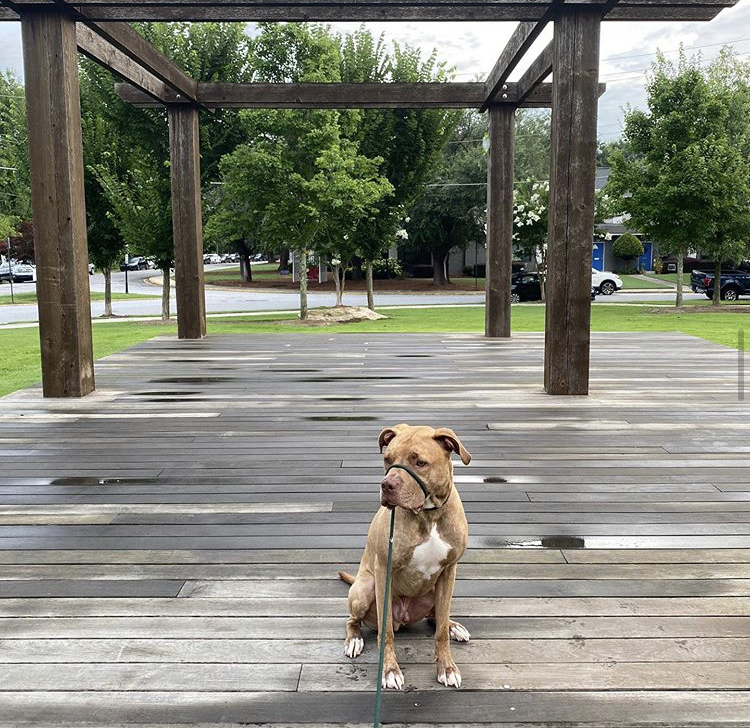
She decided not to use the e-collar or the prong, and she discovered that she could use a clicker as a reinforcer instead. She also uses a transitional slip lead that goes over his neck and nose. The leash doesn’t jerk his neck, and the clicker reinforces his good decisions and get his attention. “It was just finding the tools that empowered me and didn’t make me feel overwhelmed,” Lauren shared. “I just want him to feel safe and happy.”
Previously, when he looked at another dog, he’d get a correction because a look would lead to a reaction. If he was tense walking down the hallway, he was supposed to get a correction. If he was on edge at all, he’d get a correction. “He was constantly being stimmed,” Lauren shared. “It was so unfair. … It felt like we were constantly in conflict.”
Now, she tries to honor him and work on building him up. When he looks at another dog, she can tell if it’s curiosity or about to lead to a reaction. By inviting him to look at her instead, she can let him know he’s safe.
Lauren also manages Drake’s behavior by:
- Giving him as much space as possible. If anyone is walking towards them, she uses space to manage his reactions and reward him for eye contact.
- Knowing his thresholds. A threshold is just the point where a dog has engaged in fight, freeze, or flight, and may struggle to think or process his surroundings. This is where a dog won’t take treats or can’t focus.
- Avoiding trigger stacking. Trigger stacking just means a dog is unable to recover from the stress of reacting to a trigger before facing a new trigger. This means reactions get more and more intense as the dog gets overwhelmed.
- Utilizing decompression walks. These sorts of walks allow for freedom of movement and engagement for dogs, allowing them to use their nose and mind and thus ultimately recover from any triggers. As a result, they’re much more mentally able to face any new challenges or triggers.
She also works on handling her embarrassment and anxiety through an app called The Tapping Solution every morning, and she makes sure she writes down ten things she’s grateful for or would like to brag about. Sometimes it’s about Drake. Sometimes it’s about herself. The process has helped her realize just how far she and Drake have come. “Perfect isn’t going to come tomorrow,” Lauren shared. “But that’s okay. We’re working towards it.”
She also uses several training cues with Drake, including:
- Engage/Disengage: This simple game simply means that Drake can choose to look at a trigger and away and be rewarded for not reacting. This article breaks down the concept a bit more.
- Middle: By inviting Drake to come around and through Lauren’s legs, Lauren can use her body as a safe zone for Drake. Ultimately, she’d like Drake to see a person and come to middle, knowing nothing will happen to him.
- Tug: Tug is often used as a reward for Drake through the LAT (Look At That) process. When he sees a dog and doesn’t react, he gets to play tug. This helps build positive associations and fulfill his biological needs.
- Heel: Drake knows a strict heel, plus all of his commands due to all the training he’s been through. Lauren will use heel as a redirection tool if needed.
- Look: This is just to encourage eye contact when people get too close.
- Enrichment: She also uses items like snuffle mats and Kongs for enrichment. Similar to a decompress walk, this sort of enrichment allows Drake to recover from any stress induced from a reaction to a trigger. Here’s a great starting list for a few affordable, simple options.
But the most important part for her is to build her relationship with Drake. “I don’t want a trick dog,” Lauren said. “I don’t care if he sits pretty. I just want a dog who doesn’t lash out if people get too close.”
Additionally, before anyone suggests it, there’s no indication that breed is a major indicator, as Lauren found when she met a labradoodle for a running service she’s been doing. Milo, the dog, started barking and lunging as soon as the owner answered the dog. She saw Drake immediately in the reaction. The owner, embarrassed, was hitting the dog’s nose in an attempt to get him to stop. Lauren took steps away from Milo and looked away. All three of them went on a walk together, and by the end, the dog was letting her pet him under his chin and licking her hand. “We were fine,” Lauren shared. “It was a very cool experience for me. I always feel like people are judging me with Drake’s reaction. … It was good to have that perspective.”
In fact, Lauren has found that most pitbulls in Atlanta don’t have the same responses to triggers that Drake does. “I feel like Drake is the only reactive pitbull in Atlanta,” Lauren shared.
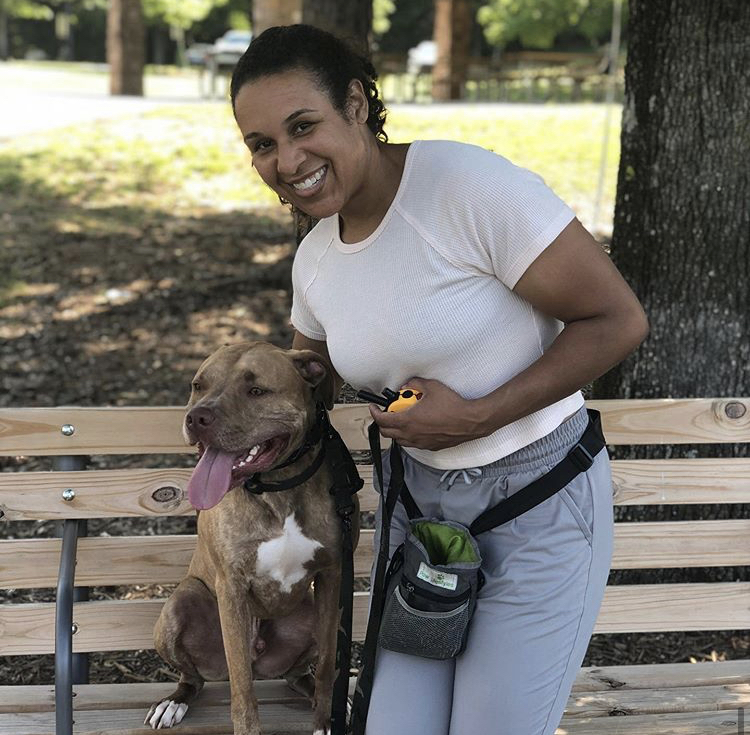
Her advice for owners who are realizing that their dog may be reactive is to stay calm. “Honor your dog and don’t get upset with him,” Lauren said. “A dog that’s reactive is telling you that he’s not comfortable with the situation and he doesn’t want to be in it. Try as much as you can to keep him out of the situations that make him reactive while you’re figuring out answers. When looking for a trainer, make sure you see video of how he or she works in detail and make sure they’re treating your dog and you fairly and don’t make you feel any sort of way in regards to being less than or not smart with your dog. And most importantly, have patience, because it is a journey and It doesn’t take weeks. It doesn’t take months. It may take up and over a year because dogs are very sensitive creatures and we have to communicate with them without English so it takes time for them to understand.”
How has your dog embarrassed you? Sound off in the comments below or send me an email at info@telltaildogtraining.com. Telltail Dog Training offers group classes and private in-home lessons in the Little Rock area, along with training walks for current clients. Find Telltail’s podcast here, or find additional information on Instagram, Facebook, and YouTube.


